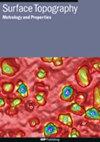未污染不锈钢和钛 FSW 接头的摩擦学和机械性能:相似和不相似接头的新型特征描述
IF 2
3区 材料科学
Q2 ENGINEERING, MECHANICAL
引用次数: 0
摘要
搅拌摩擦焊(FSW)是一种新兴的固态焊接工艺,可根据要求连接异种或类似金属。在航空航天和骨科应用等对重量敏感的行业中,焊接接头所需的额外材料也被认为是一个至关重要的减重因素。相似和不相似的 Ti-6Al-3Nb-2Zr-1Mo (Ti6321) 和不锈钢 (SS 310) 接头是通过搅拌摩擦焊实现的。本研究旨在确定工艺参数对 FSW 接头机械性能和微观结构特征的影响。共选择了五块钢板,其中三块为 FSW 接头,两块保持原始母材。对所有五块板材进行了拉伸、显微硬度和磨损测试,包括晶粒大小分析。结果表明,与其他接头相比,类似的 Ti6321 接头在销钉直径为 6 毫米、横向速度为 60 毫米、旋转速度为 900 毫米和恒定轴向力为 1 千牛的条件下,显微硬度最大为 362 HV,抗拉强度为 927 兆帕。摩擦学特性的鉴定是在针盘装置上改变载荷(10-50 N)、滑动速度(1-5 m s-1)和恒定滑动距离(1000 m)。结果表明,焊接参数和工具直径会影响摩擦学特性。用 FE-SEM 进行的表面形貌分析表明,HAZ 由针状 α 组成。由于颗粒分布均匀,WC 的显微硬度比 BM 高。使用 XRD 分析了化学成分和相。本文章由计算机程序翻译,如有差异,请以英文原文为准。
Tribological and mechanical properties of FSW joints of untainted stainless steel and titanium: novel characterization of similar and dissimilar joints
Friction Stir Welding (FSW) is an emerging solid-state welding process that joins dissimilar or similar metals based on requirements. The additional material to make the joint is also a weight reduction factor deemed vital in weight-sensitive industries like aerospace and orthopedic applications. The similar and dissimilar Ti-6Al-3Nb-2Zr-1Mo (Ti6321) and stainless steel (SS 310) joints are performed through friction stir welding. This investigation aims to identify the effect of process parameters on the mechanical behavior and microstructural characteristics of the FSW joints. Five plates are chosen; three are FSW joints, and two are kept in the original base material. In all five plates, tensile, microhardness, and wear tests are performed, including an analysis of grain size. It is observed that the similar Ti6321 joint with a 6 mm pin diameter, 60 mm transverse speed, 900 mm rotational speed, and a constant axial force of 1 KN exhibits a maximum microhardness of 362 HV and a tensile strength of 927 MPa when compared to other joints. The tribological properties are identified as varying load (10–50 N), sliding speed (1–5 m s−1), and a constant sliding distance (1000 m) on pin-on-disc apparatus. It reveals that welding parameters and tool diameter influence tribological characteristics. The surface morphology carried out by FE-SEM revealed that the HAZ is composed of acicular α. The increase in microhardness is higher in WC than in BM due to the uniform distribution of particles. The chemical composition and phases are analyzed using XRD.
求助全文
通过发布文献求助,成功后即可免费获取论文全文。
去求助
来源期刊

Surface Topography: Metrology and Properties
Materials Science-Materials Chemistry
CiteScore
4.10
自引率
22.20%
发文量
183
期刊介绍:
An international forum for academics, industrialists and engineers to publish the latest research in surface topography measurement and characterisation, instrumentation development and the properties of surfaces.
 求助内容:
求助内容: 应助结果提醒方式:
应助结果提醒方式:


